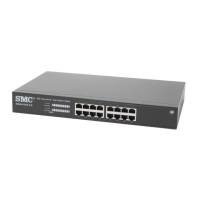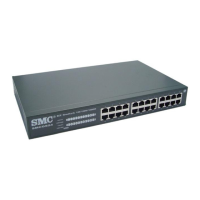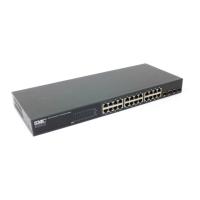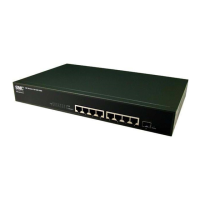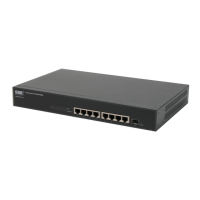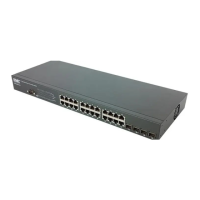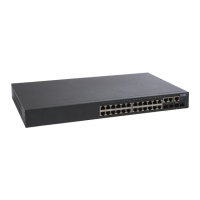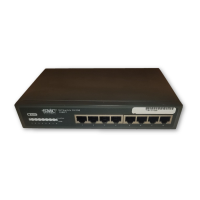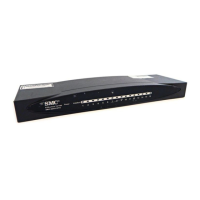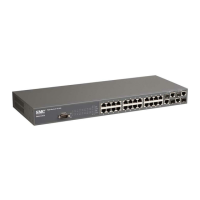C
HAPTER
4
| Configuring the Switch
Configuring the Spanning Tree Algorithm
– 120 –
◆ Bridge Priority – Bridge priority is used in selecting the root device,
root port, and designated port. The device with the highest priority
becomes the STA root device. However, if all devices have the same
priority, the device with the lowest MAC address will then become the
root device. (Note that lower numeric values indicate higher priority.)
■
Default: 128
■
Range: 0-240, in steps of 16
■
Options: 0, 16, 32, 48, 64, 80, 96, 112, 128, 144, 160, 176, 192,
208, 224, 240
◆ Forward Delay – The maximum time (in seconds) this device will wait
before changing states (i.e., discarding to learning to forwarding). This
delay is required because every device must receive information about
topology changes before it starts to forward frames. In addition, each
port needs time to listen for conflicting information that would make it
return to a discarding state; otherwise, temporary data loops might
result.
Minimum: The higher of 4 or [(Max. Message Age / 2) + 1]
Maximum: 30
Default: 15
◆ Max Age – The maximum time (in seconds) a device can wait without
receiving a configuration message before attempting to reconfigure. All
device ports (except for designated ports) should receive configuration
messages at regular intervals. Any port that ages out STA information
(provided in the last configuration message) becomes the designated
port for the attached LAN. If it is a root port, a new root port is selected
from among the device ports attached to the network. (Note that
references to “ports” in this section mean “interfaces,” which includes
both ports and trunks.)
Minimum: The higher of 6 or [2 x (Hello Time + 1)]
Maximum: The lower of 40 or [2 x (Forward Delay - 1)]
Default: 20
◆ Transmit Hold Count – The number of BPDU's a bridge port can send
per second. When exceeded, transmission of the next BPDU will be
delayed. (Range: 1-10; Default: 6)
◆ Max Hop Count – The maximum number of hops allowed in the MST
region before a BPDU is discarded. (Range: 6-40; Default: 20)
An MST region is treated as a single node by the STP and RSTP
protocols. Therefore, the message age for BPDUs inside an MST region
is never changed. However, each spanning tree instance within a
region, and the common internal spanning tree (CIST) that connects
these instances use a hop count to specify the maximum number of
bridges that will propagate a BPDU. Each bridge decrements the hop
count by one before passing on the BPDU. When the hop count reaches
zero, the message is dropped.
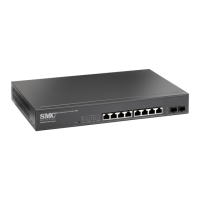
